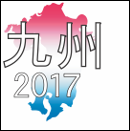Speaker
Dr
Joshua Hawke
(Swiss Federal Institute of Technology (Swiss Plasma Center))
Description
The recently completed MST2 upgrade to the Thomson scattering (TS) system on the TCV Tokamak at the Swiss Plasma Center at EPFL was performed. This upgrades aim was to provide an enhanced spatial and spectral resolution while maintaining the high level of diagnostic stability that is required for physics studies of TCV plasmas. In order to improve the spatial resolution of the system, there were two primary changes to the existing TS that were performed: The addition of 40 new compact 5-channel spectrometers and a modification of the current fiber optic design. The complete redesign of the fiber backplane and installation of all new fiber optics allow for the removal of the observational gaps present in the previous design. This redesign of the fibers plus the increase in total spectrometers from 47 to 89, results in an improved overall spatial resolution of 12 mm in the core and 6 mm at the edge. This new design incorporates fewer larger diameter fibers and thus results in a decrease in the Signal to Noise ratio of approximately 1.25 in the core and 2.0 at the edge. Additional upgrades to acquisition systems, namely the gate integration, keeps the SNR similar to that of the post upgrade system.
The 40 new spectrometers added to the system are designed to cover the full range of temperatures expected in TCV, able to measure electron temperatures ($T_e$) with high precision between (10 eV and 20 keV). The design of these compact spectrometers stems originally from the design of the MAST TS system, containing five sets of interference filters and detectors that facilitate the mentioned temperature coverage. Of these 40 spectrometers 20 are with two fibers and 20 with one fiber, with the overall layout designed to achieve a spatial resolution of $\sim 1$ % of the minor radius, i.e. $\sim 2.5$ mm, in the outer magnetic mid-plane in the H-mode pedestal region. These spectrometers greatly enhance the diagnostic spectral resolution, especially at the plasma edge, now with 52 spectrometers that measure to sub 10 eV electron temperatures, up from 12 spectrometers. These additional spectrometers allow for a much greater diagnostic flexibility, designed to allow for quality full Thomson profiles for $\sim 75$ % of TCV plasma configurations. In a similar timeline there was a second parallel upgrade taking place, in which old 4-channel spectrometers has the electronics refurbished, implementing a new gate integration system.
The full upgrade and commissioning of the system was completed in May 2017 in time for the MST1 (Medium Sized Tokamak) campaign as part of EuroFusion. All the effort that went into this upgrade has resulted in a well performing system with enhanced capabilities. The work presented here will highlight the improved performance of the system as well as its impact on physics studies on TCV.
*This work was supported in part by the Swiss National Science Foundation.
This work has been carried out within the framework of the EUROfusion Consortium and has received funding from the Euratom research and training programme 2014-2018 under grant agreement No 633053. The views and opinions expressed herein do not necessarily reflect those of the European Commission.*
Primary author
Dr
Joshua Hawke
(Swiss Federal Institute of Technology (Swiss Plasma Center))
Co-authors
Dr
Patrick Blanchard
(Ecole Polytechnique Fédérale de Lausanne (EPFL), Swiss Plasma Center (SPC))
Mr
Yanis Andrebe
(Ecole Polytechnique Fédérale de Lausanne (EPFL), Swiss Plasma Center (SPC))

